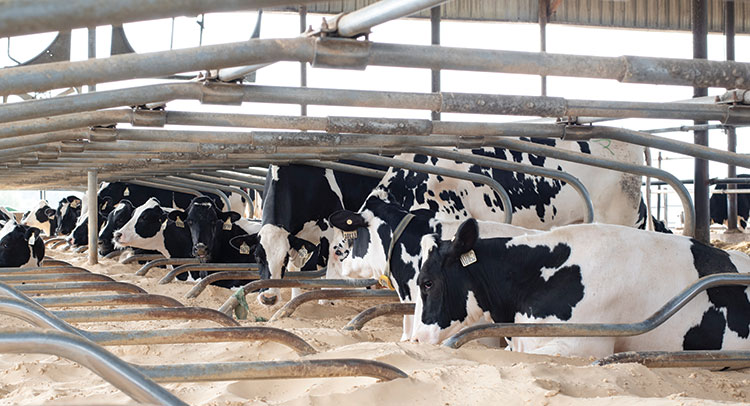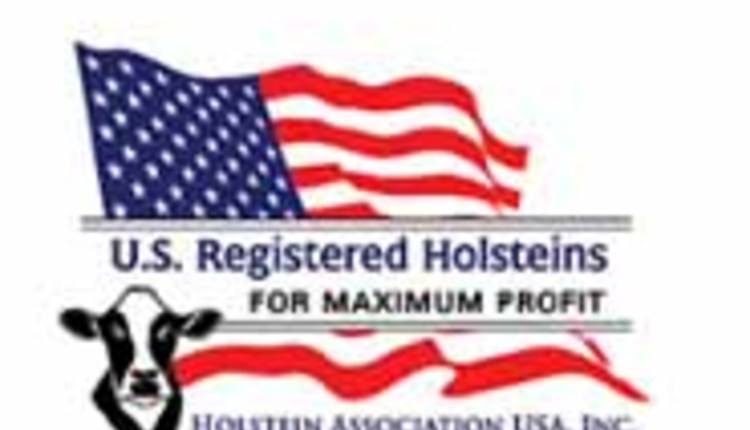
Farmers continue to perfect both the art and science that goes into raising dairy cattle. With that has come more milk per cow per day.
“Average milk production per cow in the U.S. has increased dramatically in a linear fashion the past few decades with no inclination of stopping,” said Penn State agricultural engineer Dan McFarland during the Penn State Dairy Cattle Nutrition Conference. “Improvements in genetics, better nutrition, and improved cow management techniques have led to this growth in production per cow.”
He also gave a nod to dairy housing. “Facility improvements have also contributed by providing more comfort and a healthier environment to help cows better express their genetic potential and improve longevity,” he noted.
John Tyson, who is also an agricultural engineer with Penn State University, pointed out that milk production has risen from 7,000 pounds per cow in 1960 to 23,000 pounds per cow in 2019.
“A 30,000-pound rolling herd average is no longer a dream,” Tyson said. “Bulk tank herd averages of 100 pounds or more are not the exception, they are what everyone strives for.”
He also believes the upper limit is not yet in sight, but care and management must keep pace. More production means higher dry matter intake, higher water consumption, more heat produced, additional lying time, and more manure produced.
“Those factors must be considered as we plan housing for the future, but it is good to remember that a cow is still a cow,” Tyson said. “Air, water, feed, and shelter — those are the basics of life. How well we do those four things will help us drive up the lactation curve.”
Fresh air in the barn
“When animals are brought inside, the conditions inside need to be equal to, if not better than, the conditions outside,” Tyson said. He shared that our current standards for ventilation are to provide clean, dry air to animals throughout the year; remove moisture, gases, and pollutants; and remove excess heat produced by animals during hot weather.
Natural ventilation has been a popular form of air exchange for years, and it depends on barn orientation, size of the inlets, and the building’s exposure to natural wind. This exposure to wind is very important, and Tyson said we are likely to see new barns built on sites with better elevation to take advantage of this wind exposure. He noted that the ability of natural ventilation to properly ventilate a dairy facility may be challenged as our shelters get wider and house more cows and farm sites have more buildings that may block the wind.
Looking ahead, he said it may become even more common to combine natural ventilation with mechanical ventilation, which comes at a higher cost to operate but provides more consistent air exchange. Tyson also foresees more emphasis being placed on consistency of air quality in the shelter, with farms utilizing automated controls and artificial intelligence to run these ventilation systems to maximize stability.
He also addressed heat abatement within dairy facilities. “With higher production comes more heat,” Tyson said. He explained that a cow milking 100 pounds per day has a heat stress threshold about 10 degrees lower than a cow milking 75 pounds.
“High-producing cows are going to be heat stressed earlier in the summer, earlier in that heat curve, than lower-producing cows,” he said. “Heat abatement is an area we are going to have to put more emphasis on in the future, not less.”
A place to rest
The next area covered was the stall. McFarland said that the first freestalls were developed in the early 1960s. Over the next few decades, the main design criteria for freestalls was to reduce square footage as a way to reduce cost. It was also thought that smaller stalls would keep cows cleaner.
McFarland said we now know how cows behave in short freestalls. “They don’t get up in their natural posture, and they don’t use the entire stall,” he said. “We see more standing and perching because the stall length doesn’t allow the cow to get in and rest comfortably.”
Today, freestalls are longer and wider. We have also learned that the position of the neck rail and divider are very important in allowing a cow to rest comfortably and lunge forward when they get up.
The first stalls were made of wood, and then metal versions became commercially available. McFarland pointed out that flexible stalls are now available on the market, too. Even through these stalls allow a little more freedom of movement, he said that the width of stall should not be reduced, as cows still need the same footprint while resting.
The resting surface has also changed over the years. McFarland said stalls used to be earth-based, but cows would dig them out, making them difficult to maintain. More modern stall bases provide added comfort and encourage cows to rest.
“Cows probably prefer a generous bedding layer over other stall bases,” McFarland said. He recommended 4 to 8 inches of bedding that conforms to the shape of the cow, provides good traction, and offers a good degree of comfort. “I don’t think a cow cares if it is sand, straw, sawdust, dried manure solids, or whatever material they are resting on, as long as it gives them a good cushion and conforms to their body while they are resting,” he shared.
Looking ahead, he said stall size and structure should adjust as cow size and needs change. “We need to adapt our stall management practices to provide cow comfort, promote cleanliness, and increase longevity,” he said.
He also made a note about the overcrowding that is common in many dairy barns. In these situations, cows may stand around waiting for a stall to rest. “That may need to go away as cows have increased needs for rest in the future,” McFarland said. “We should relook at overcrowding and see what works best for a particular group of animals as well as a particular farm.”
Feed and water
When it comes to feeding cows, Tyson said that J-bunks and H-bunks elevated about 24 inches from the ground were popular in the 1970s and 1980s, and farms were feeding silage and grains separately. Then, in the 1990s and continuing today, the feeding platform turned toward a position more similar to grazing, just 2 to 6 inches above the alley, and farms switched to TMR feeding.
For the future of feedbunk design, Tyson said we will need to look at animal behavior. Cows typically consume their daily dry matter intake (DMI) in 3 to 5 hours, spread over 7 to 12 meals per day. Tyson said the size and distribution of those meals impact total DMI and may also influence rumen function.
“The goal is to achieve more consistent DMI,” he said. “We need more frequent meals, and smaller meals, spread over a longer period of time.”
With more feedbunk competition, Tyson said cows reduce feeding time and speed up feeding rate, which is exactly the opposite of what we want to do to improve DMI. Tyson said competition at the feedbunk is an area to evaluate if we want to maximize milk production.
Tyson also addressed water needs. He shared that water is the largest feed ingredient on the farm, and a cow producing 80 pounds of milk will consume 120 pounds of water in a day.
“We know that water drives milk production, and production drives water intake,” he said.
Tyson said milk in the future will still be about 87% water, and that water has to come from somewhere. He recommended enough waterer space so that 15% to 20% of cows in a group can drink at the same time. He also suggested a recharge rate of 6 to 10 gallons per minute so that waterers don’t go dry.
Looking ahead, he said, “I think water stations are going to get bigger, with more water flowing through them.” He believes farms will provide more space per cow, and waterer number and placement will come earlier in discussions when planning new barns.
The critical transition period
For Tyson, dry cows and transition cows are a facility design opportunity area. While herd genetics set the stage for production level, “It’s truly dry cow and transition cow programs and management that set this bar,” he said. “The real difference between a 25,000-pound herd and a 30,000-pound herd may be its dry cow program that allows those cows to reach their genetic potential.”
Even though dry cows only represent 15% to 20% of the herd, Tyson said that every cow in the herd will hopefully make it through this period multiple times in its lifetime. In addition, for every cow in the dry cow or transition cow pen, another four cows in the milking string are helping pay the bill.
“Every cow is going to be affected by the transition facility,” he said.
Focus on the cow
In a broader sense, McFarland touched on management-related influences that might affect facility design in the future. One is the fact that farms will likely continue to grow in herd size. Farms may also have multiple sites or multiple owners. In addition, processor wants and needs may impact building decisions, along with environmental regulations and consumer perceptions. Even so, the cows should remain the focal point.
McFarland said we want to be sure housing now and in the future provides these five common freedoms:
- Freedom from hunger and thirst
- Freedom from discomfort
- Freedom from pain and injury or disease
- Freedom to express normal behavior
- Freedom from fear and distress
More specifically, he said, “To perform at their best, each cow requires an environment that offers excellent air quality, dry comfortable resting area, good access to fed and water, confident footing, and protection from weather extremes.”
He also addressed the needs of humans working with the herd. “In addition, caregivers need a safe working environment to observe cows readily; easily move, sort, and isolate cows as needed; and manage feeding and manure collection in a timely manner.”
Dairy cattle housing and management has changed considerably since the 1950s. There’s no doubt that facilities will continue to improve as we strive for higher milk production, but the basics of cattle care should always be at the core.











